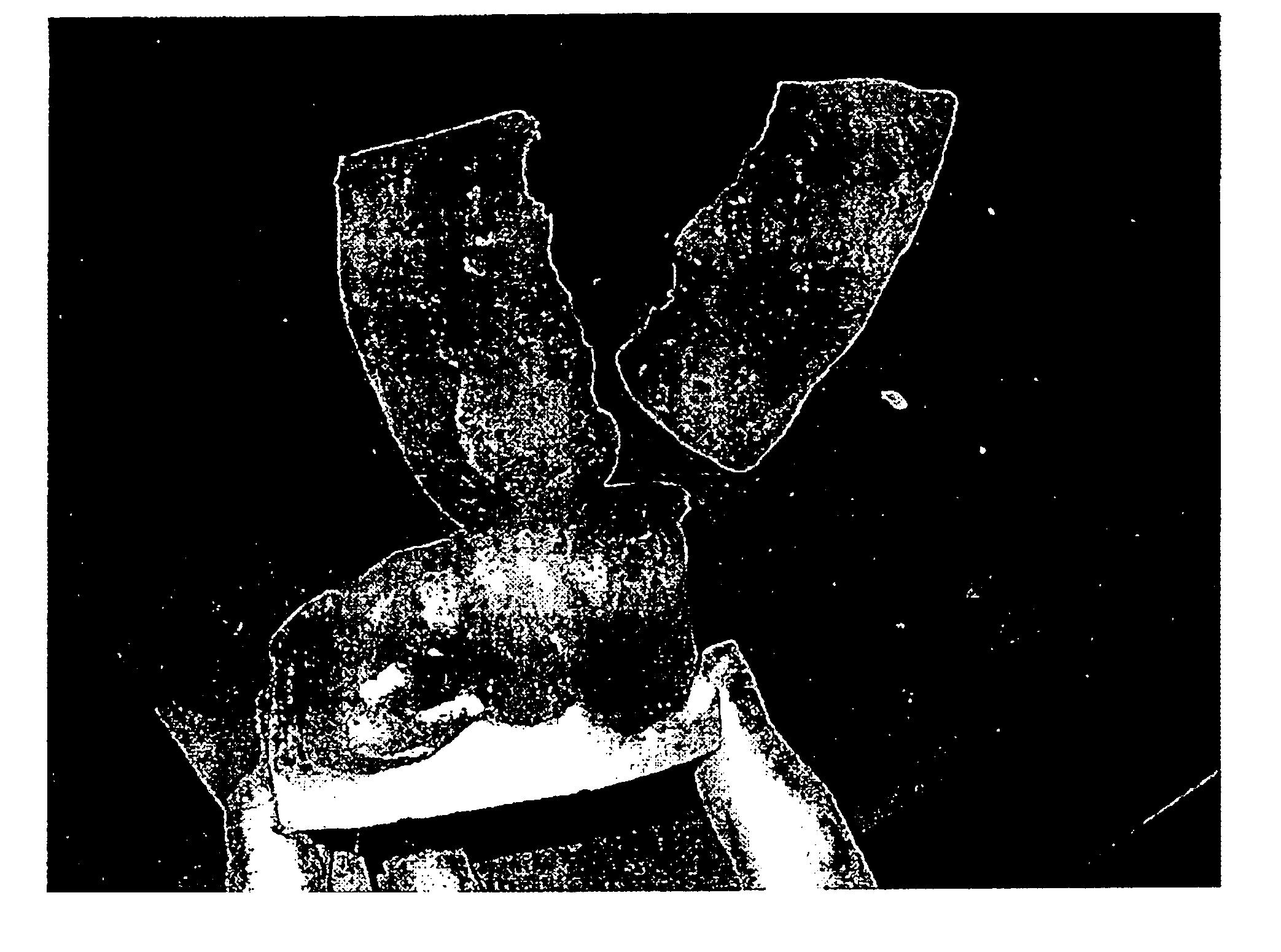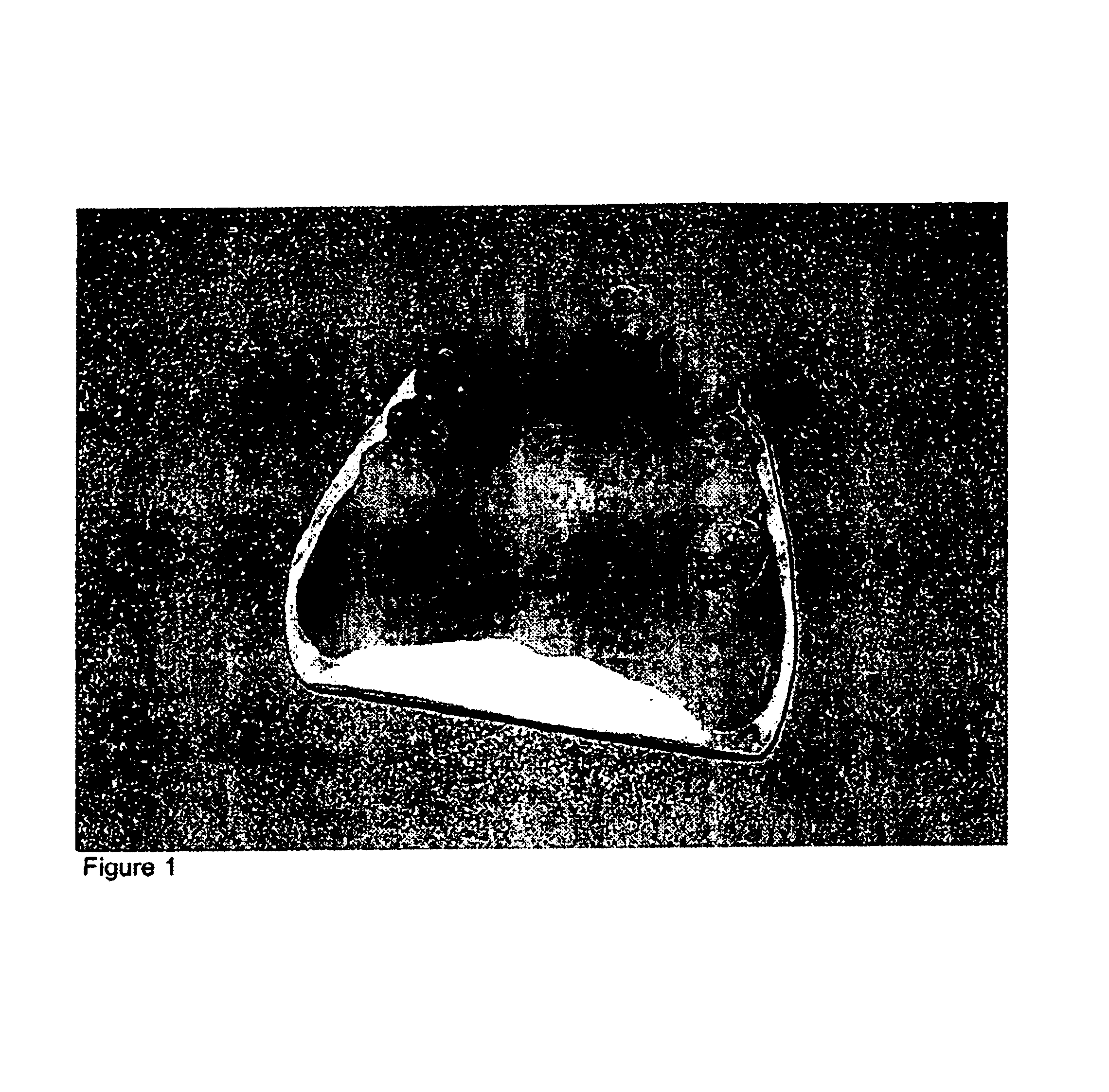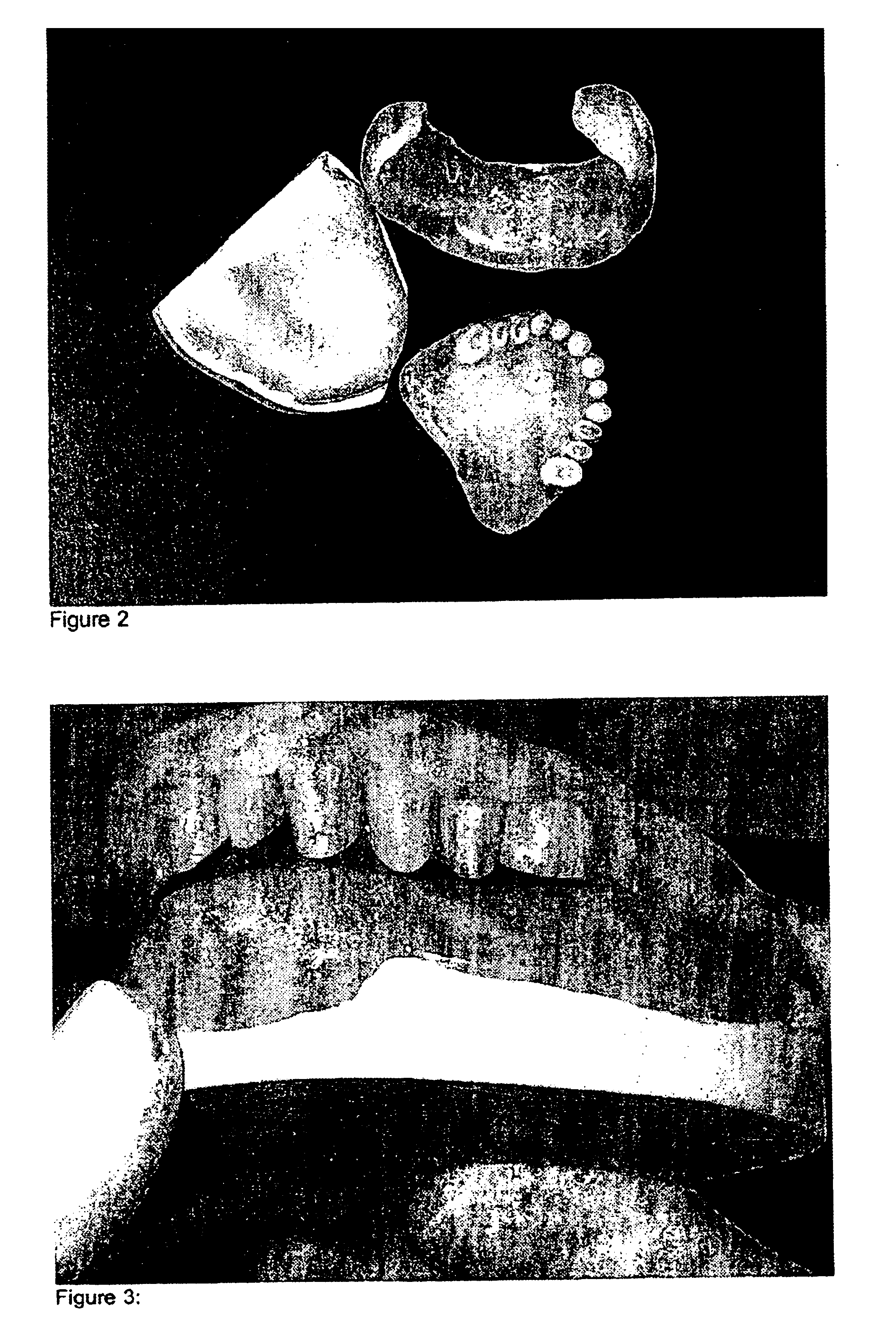Process for producing a prosthesis and a prosthesis material
a technology for prosthesis and prosthesis material, applied in dental prosthesis, dental preparation, silicate, etc., can solve the problems of time-consuming and labor-intensive complete embedding with plaster, and the inability to use light-hardening materials,
- Summary
- Abstract
- Description
- Claims
- Application Information
AI Technical Summary
Benefits of technology
Problems solved by technology
Method used
Image
Examples
Embodiment Construction
[0025]According to the invention, first, an anatomic impression of the jaw of a patient is taken using a conventional impression mass, for example, addition cross-inking silicone or alginate.
[0026]After this, a working model, consisting in particular of plaster, is constructed. A base plate of a hardenable prosthesis material, especially of a material in accordance with the invention (see below), is then applied and subsequently hardened. This constitutes the core of present invention, i.e. the use of a prosthesis material, in particular a material in according to the invention, as base plate material.
[0027]An insulating film is now applied to the base plate in order to subsequently obtain a teeth impression in wax on the insulated base plate. The teeth arches are held from the outside using an investment material, for example, a transparent addition cross-linking silicone or light-hardening embedding material on methacrylate basis. Afterwards, the wax impression is boiled out and t...
PUM
| Property | Measurement | Unit |
|---|---|---|
| weight percent | aaaaa | aaaaa |
| weight percent | aaaaa | aaaaa |
| weight percent | aaaaa | aaaaa |
Abstract
Description
Claims
Application Information
 Login to View More
Login to View More - R&D
- Intellectual Property
- Life Sciences
- Materials
- Tech Scout
- Unparalleled Data Quality
- Higher Quality Content
- 60% Fewer Hallucinations
Browse by: Latest US Patents, China's latest patents, Technical Efficacy Thesaurus, Application Domain, Technology Topic, Popular Technical Reports.
© 2025 PatSnap. All rights reserved.Legal|Privacy policy|Modern Slavery Act Transparency Statement|Sitemap|About US| Contact US: help@patsnap.com



